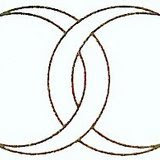
Blogroll Me!
Barbie is turning 50 this month. Happy Birthday Barbie!
Robin Gerber has written the story about Barbi. and here is an excerpt.
Chapter One
The Doll Nobody Wanted
Little girls just want to be bigger girls.
—Ruth Handler
Ruth Handler could sell anything. In 1959 she arrived in New York for the nation's Toy Fair, confident that she could sell a new doll she had created. She had been fighting naysayers, however, for seven years. The doll was a terrible idea, they had told her.
As the forty-three-year-old executive vice president of Mattel, Inc., Ruth had created an industry upstart in 1944 that was now the third biggest toy company in America. Mattel, based in Hawthorne, California, just outside Los Angeles, was a $14 million business. Ruth, a petite 5-foot–2 ½-inch hard charger with a quick smile and quicker temper, had tripled the size of the business since the start of the decade. With her husband, Elliot, as chief toy designer, she had outmarketed and outmanaged her chief rivals, Louis Marx and Company, and Kenner Products. Her revenues would soon exceed theirs.
Ruth headed straight for the New Yorker Hotel, where a room had been converted into display space. So many companies came to Toy Fair with so many toys to display that they overflowed into hotels neighboring the main hall. Beds, chairs, and desks were all carted out to make room for elaborate displays like the one for Ruth's doll.
Ruth dressed that morning to look sharp and show off her slender waist and full bust. Moving restlessly around the room, she adjusted and scrutinized each twelve-inch scaled scene, no doubt thinking about what was at stake. She had ordered a huge amount of inventory from her Japanese manufacturers. Twenty thousand of her petite-size fashion dolls were on weekly order, along with forty thousand pieces of the various outfits that had been designed to fit the doll's tiny, voluptuous figure. But the cost of moving that inventory onto and off store shelves was not all that was on Ruth's mind.
Ruth was also worried about her credibility. She had founded the company, and the men in her mostly male industry gave her credit for brilliance as an entrepreneur. But she had never invented or designed a toy. She also possessed the sometimes irrational optimism that fuels leaders and allows little tolerance for failure. Even though her designers told Ruth many times that making this doll profitable would be impossible, she pushed it through anyway.
Ruth lit one cigarette off the last. She barked orders laced with four-letter words and swiped at specks of dust. Her bravado hid another more personal reason that made this toy important to her. For her, this doll was more than a plaything. She was determined to make the buyers understand that this small plastic toy had a giant place to fill in the lives of little girls.
Toy Fair shimmered with all the hype and hoopla of a three-ring circus and a Broadway show rolled into one. The extravaganza was about innovation, design, a touch of genius, and companies betting on hitting the cultural zeitgeist. Toy manufacturers, intent on mesmerizing retail store buyers, spilled out of the main convention venue, the Toy Center at 200 Fifth Avenue, a legendary address in the history of toy making. Built just after the turn of the twentieth century, the building saw tenants move in as World War I ended and the center of toy manufacturing moved from Germany to the United States.
Large, gaudy banners draped the entrance to the fair. Adults promenaded in character costumes, and toys blinked, whirled, and stared from elaborate displays. Child's play cloaked the serious business of making toy sales. Nearly seven thousand retail buyers milled around 200 Fifth Avenue on an unseasonably warm day. New items at the 1959 fair included a working child-size soda fountain, a walking hobbyhorse, a gas-operated car that could go as fast as 22 miles per hour, and a Dr. Seuss zoo.
Starting in 1903, toy companies had arrived at Toy Fair to unveil their inventions and try to grab the attention, and shelf space, of store buyers. The first fair had been held near the docks to accommodate toys imported from Europe. That year, the American toys included the Humpty Dumpty Circus, Crayola crayons, Lionel trains, and teddy bears, supposedly named for the president who had refused to kill an orphaned bear cub.
Before Toy Fair started, the media had ignored Ruth's doll. With the space age dominating Americans' imaginations, the New York Times focused on Mattel's two-stage, three-foot-long plastic rocket, which could shoot two hundred feet into the air. Jack Ryan, a former project engineer on the U.S. Navy's Sparrow missile project, was lured from a job at Raytheon Company to design the miniature missile. Mattel had the trappings of a major aircraft company, with its own research and development department and twenty graduate engineers with a large budget to dream up the next hot toy. Picked for their unique creativity and fierce competitiveness, they were called the blue-sky group, and they were expected to think two to four years into the future.
A toy like the plastic rocket would be sent to a team of ten industrial engineers, who planned the production. "On a new item," Ruth explained to a reporter, "we will run as many as a hundred cost sheets before we fix on a design." She had boundless faith in the management and productions systems she had designed. Mattel's factories were more mechanized and its costs more refined than any of its competitors. With typical grandiosity, Ruth told the New York Times, "With our system we might just as well be turning out real airplanes or missiles." Instead, fueled by Elliot's genius for invention, Ruth sold toys to a postwar marketplace starved for them.







No comments:
Post a Comment